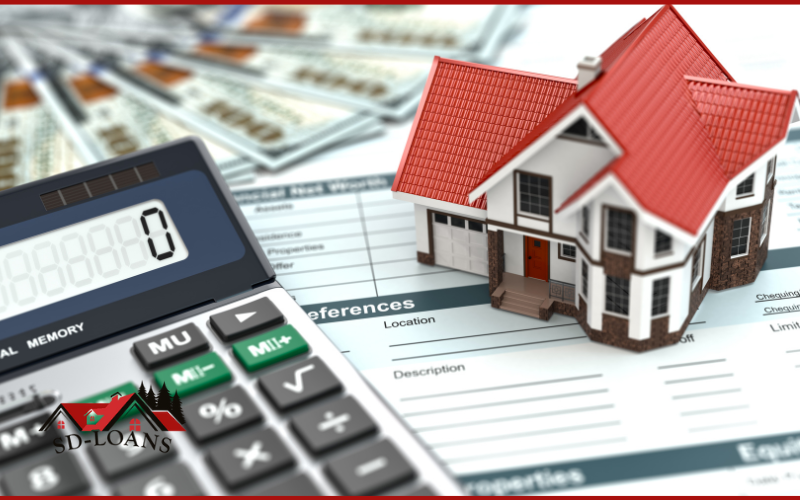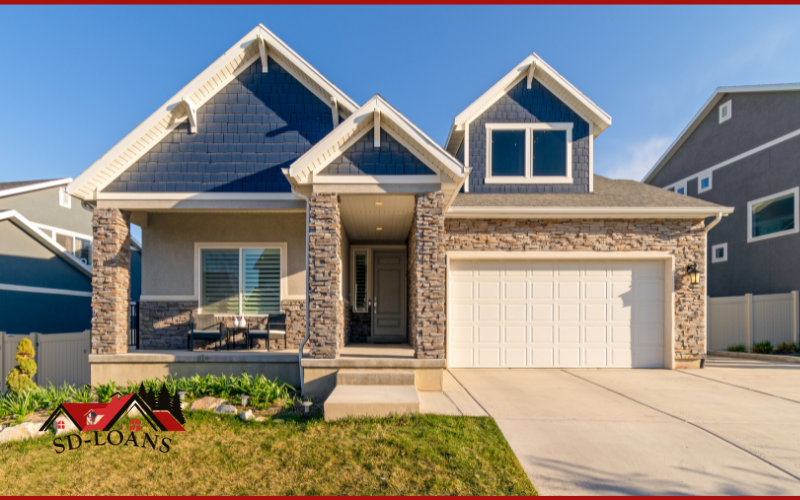Hi, I’m Trevor Sanders, owner of SD-Loans here in San Diego. If you’re a homeowner looking to unlock the value of your property, you’ve probably heard of two main tools: refinancing your mortgage or opening a Home Equity Line of Credit (HELOC). Both can give you access to money, but they work very differently.
In San Diego, refinancing is smarter if you want a lower long-term interest rate or to change your loan terms, while a HELOC is better for flexible, short-term borrowing like renovations or emergencies. Refinances usually require higher credit and equity but can save more money over time, while HELOCs give revolving credit with variable rates.
“Your home is your biggest financial tool. Choosing between a refinance and a HELOC comes down to your goals: stability versus flexibility.” – Trevor Sanders, Owner of SD-Loans
What Is a Refinance?
A refinance replaces your current mortgage with a new one—often with a better interest rate or different terms. You can:
-
Lower your monthly payments
-
Switch from an ARM to a fixed-rate loan
-
Take out cash through a cash-out refinance
Best For: Homeowners looking for stability, long-term savings, or a single large lump sum of cash.
What Is a HELOC?
A HELOC (Home Equity Line of Credit) works more like a credit card tied to your house. You can borrow against your home’s equity, repay, and borrow again during the draw period (usually 10 years).
-
Interest rates are usually variable
-
Payments depend on how much you borrow
-
Flexibility to use funds as needed
Best For: Short-term needs like home upgrades, covering college tuition, or having an emergency safety net.
Refinance vs. HELOC: Key Differences
| Feature | Refinance | HELOC |
|---|---|---|
| Payout | Lump sum | Revolving line of credit |
| Interest Rate | Fixed (usually lower long-term) | Variable (may rise over time) |
| Monthly Payments | Consistent, predictable | Flexible, can fluctuate |
| Best Use | Long-term savings, debt consolidation, big expenses | Short-term projects, ongoing expenses |
| Risk | Closing costs and new loan terms | Rising interest rates and payment swings |
| Equity Needed | Usually 20%+ for best terms | Typically 15–20% minimum |
When Refinance Makes Sense
-
Your current mortgage rate is 7% or higher and today’s refinance rates can lower it
-
You need a large, one-time sum (e.g., debt consolidation, buying another property)
-
You want to lock in a fixed payment for long-term stability
-
You’re planning to stay in your home for several years
When a HELOC Makes Sense
-
You want flexibility and don’t know exactly how much you’ll need
-
You’re funding ongoing home improvements (kitchen remodel today, roof repair later)
-
You expect to pay it back quickly before rates adjust too much
-
You’d rather avoid the higher closing costs of a full refinance
Local Market Factors in San Diego
San Diego’s high home values (median price around $888,000 in 2025) mean many homeowners have significant equity. That opens the door for both refinances and HELOCs.
-
Refinancing may unlock large sums for investment properties or debt consolidation.
-
HELOCs are popular among homeowners in neighborhoods like North Park and Chula Vista, where upgrades can quickly increase property value.
Pros & Cons at a Glance
Refinance Pros
-
Lower long-term interest rate
-
Stable monthly payments
-
Lump sum for big goals
Refinance Cons
-
Higher upfront costs
-
Takes longer to process
-
Resets loan timeline
HELOC Pros
-
Flexible borrowing as needed
-
Lower upfront costs than refinancing
-
Interest paid only on borrowed funds
HELOC Cons
-
Variable rates may increase
-
Risk of over-borrowing
-
Payments can rise sharply
Which Is Smarter in 2025?
It depends on your financial goals:
-
Choose a Refinance if you want long-term stability, predictable payments, or need a large amount of cash.
-
Choose a HELOC if you want flexibility, expect smaller ongoing expenses, or plan to pay it back quickly.
FAQs
Q1: Which is cheaper, refinancing or a HELOC?
HELOCs usually have lower upfront costs, while refinances can save more in the long run.
Q2: Can I have both a refinance and a HELOC?
Yes, some homeowners refinance their first mortgage and then take a HELOC later.
Q3: Does a HELOC affect my credit score?
Yes, it shows up as a revolving line of credit and can impact your score depending on usage.
Q4: How long does it take to get approved for a HELOC in San Diego?
Typically 2–4 weeks, faster than a full refinance.
Q5: Should I refinance or get a HELOC if I’m selling my home soon?
A HELOC may be better for short-term needs, while refinancing only makes sense if you’ll stay long enough to benefit from savings.
 Both refinancing and HELOCs can be smart tools for San Diego homeowners in 2025—but for different reasons. Refinances bring stability and savings, while HELOCs bring flexibility and easy access.
Both refinancing and HELOCs can be smart tools for San Diego homeowners in 2025—but for different reasons. Refinances bring stability and savings, while HELOCs bring flexibility and easy access.
If you’re not sure which is right for you, let’s talk. At SD-Loans, I’ll walk you through the numbers, compare your options, and help you make the best choice for your unique situation.
📞 Call/Text me at 619-855-5061 or visit SD-Loans.com to schedule your consultation today.






